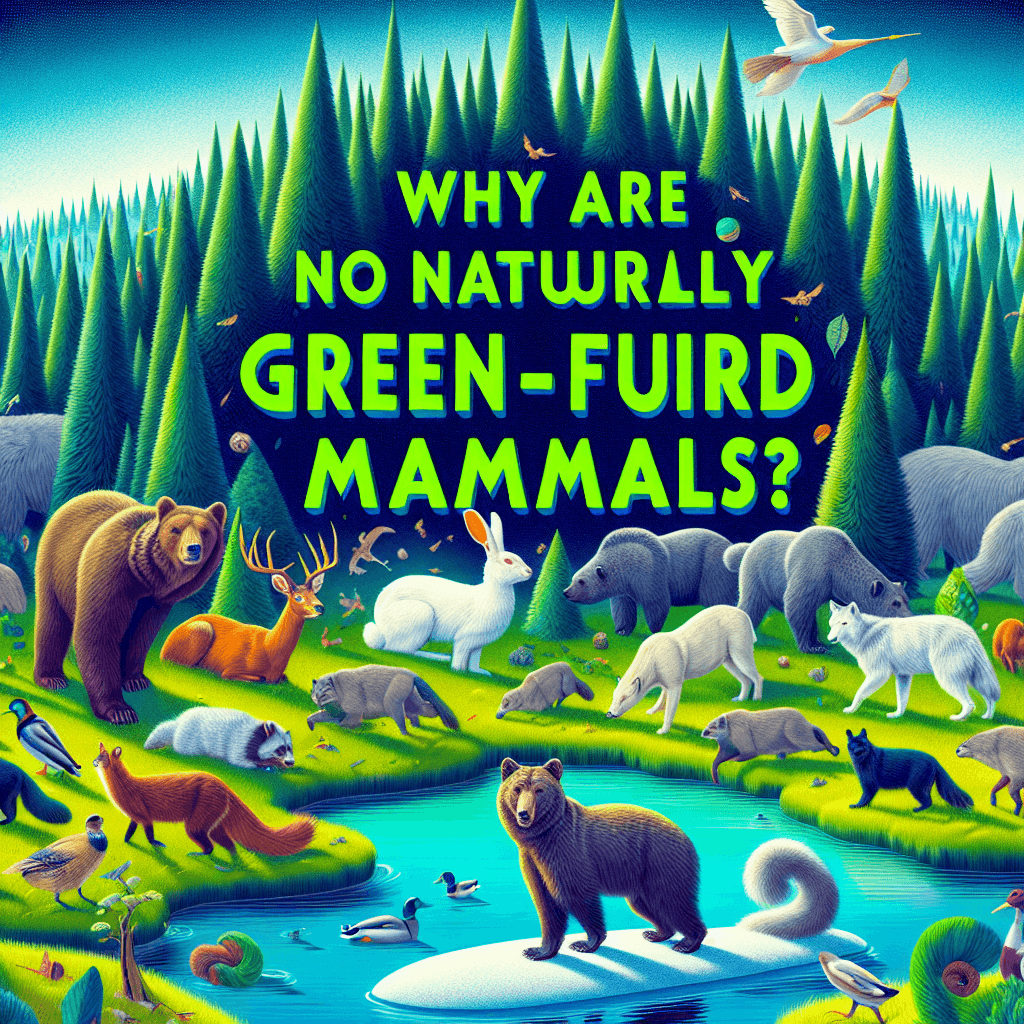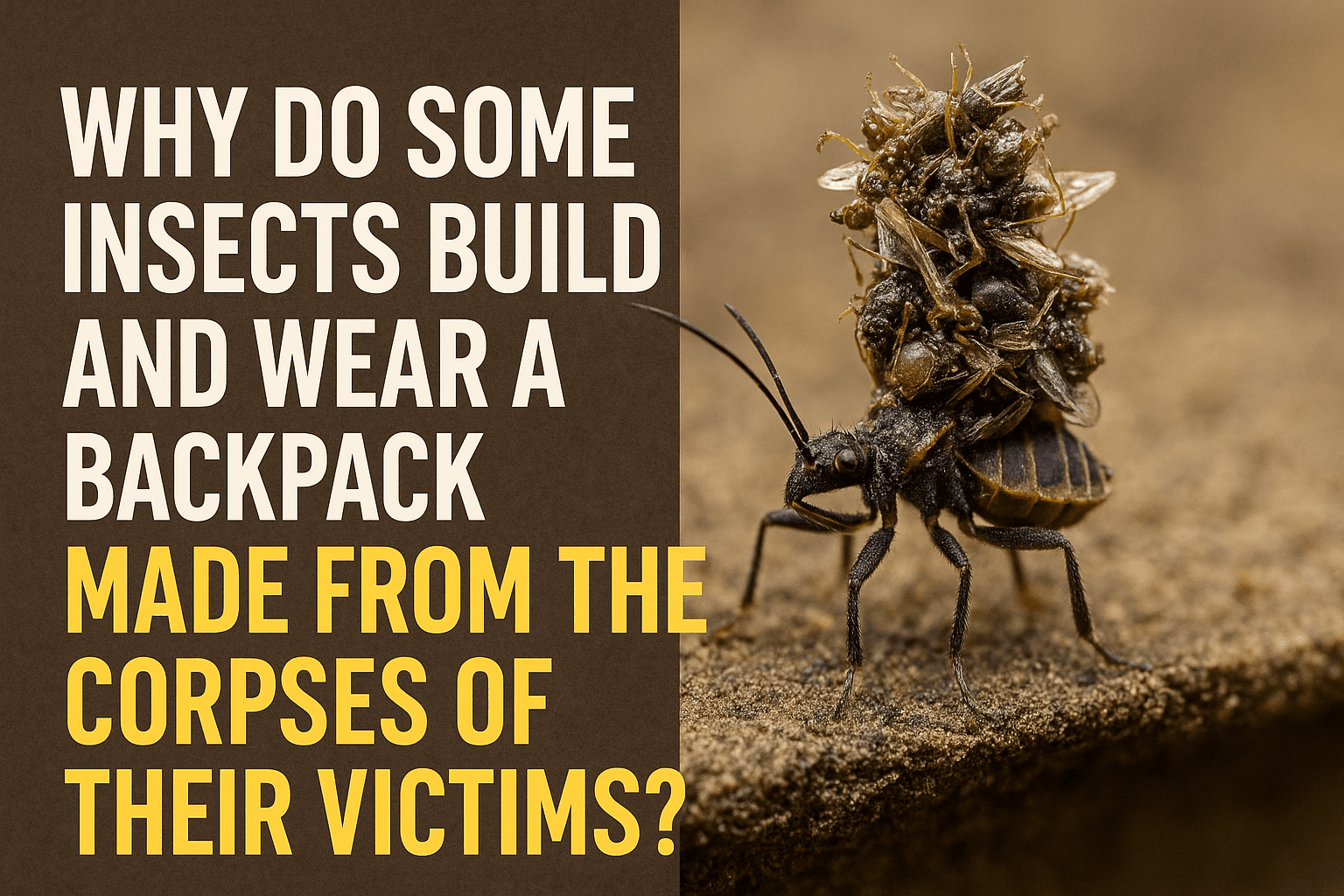Why are there no naturally green-furred mammals
From forest-dwelling squirrels to jungle cats, green would be the perfect camouflage, yet not a single mammal on Earth has naturally green fur. The answer involves a surprising evolutionary quirk that has everything to do with pigments, predators, and seeing in the dark.


Too Long; Didn't Read
TLDR: Mammals can't produce green pigment for fur, and their typical brown and gray colors are better for camouflage on the ground where they live. Sloths only look green because algae grows on their fur.
The Green Enigma: Why Are There No Naturally Green-Furred Mammals?
From the emerald canopy of the Amazon rainforest to the simple green grass in a suburban park, the color green is synonymous with the natural world. Birds, reptiles, amphibians, and insects all sport vibrant green hues for everything from camouflage to courtship. Yet, when you look at the mammalian class—from the tiniest shrew to the colossal blue whale—one color is conspicuously absent from their coats. So, why are there no naturally green-furred mammals? The answer isn't a simple oversight by nature but a fascinating intersection of biochemistry, evolution, and environmental adaptation. This post will delve into the scientific reasons behind this curious biological gap.
The Pigment Problem: Why Mammals Can't Make Green
The most fundamental reason for the lack of green fur comes down to pure chemistry. Mammalian hair color is determined by just two types of pigments, both of which are forms of melanin.
- Eumelanin: This pigment is responsible for shades of black and brown. The more eumelanin present, the darker the hair.
- Pheomelanin: This pigment produces yellow and reddish-orange hues.
Every hair color in the mammalian kingdom, from a polar bear's white (a lack of pigment) to a fox's red and a panther's black, is created by varying the amount and combination of these two melanin types. Crucially, there is no known biochemical pathway in any mammal to produce a true green pigment. Creating green would require a completely different, more complex molecular structure that simply never evolved in our lineage.
In contrast, other animal classes have found different solutions. Birds, for example, often create green by combining yellow carotenoid pigments obtained from their diet with the unique physical structure of their feathers, which scatters light to produce a blue hue. The combination of yellow pigment and blue structural color results in the vibrant greens we see on parrots and hummingbirds.
An Evolutionary Mismatch: Camouflage and Color Vision
Even if mammals could produce green pigment, there hasn't been a strong evolutionary reason to do so. The primary driver for coat color is camouflage—the ability to blend in with the environment to avoid predators or ambush prey. While it seems intuitive that a green coat would be perfect for hiding in forests and grasslands, this assumption is based on our own primate vision.
For most of mammalian history, their primary predators were other mammals who possessed dichromatic vision. This means they could only see in two primary colors (similar to modern-day dogs or red-green colorblind humans). To a dichromatic predator, distinguishing between green and brown is incredibly difficult, especially in the dappled light of a forest floor. A brown, grey, or mottled coat breaks up an animal's outline just as effectively—if not more so—than a solid green one would.
Furthermore, many smaller, vulnerable mammals are nocturnal. In the low-light conditions of the night, color is irrelevant. Shades of brown, grey, and black provide far superior camouflage in the darkness than any specific color. Therefore, there was never a strong selective pressure to overcome the significant biochemical hurdles required to evolve green fur.
The "Green" Exception: The Clever Sloth
There is one mammal that appears to have broken the rule: the sloth. Hanging in the trees of Central and South America, many sloths have a distinct greenish tint to their coats. However, this is not a true green fur but rather a brilliant biological shortcut.
A sloth's fur isn't producing a green pigment. Instead, its coarse, grooved hair strands are uniquely adapted to trap moisture, creating a perfect miniature ecosystem for algae to grow. This symbiotic relationship provides the sloth with incredible camouflage in the verdant rainforest canopy. In essence, the sloth outsources its coloration. It has evolved to be a living, moving garden rather than evolving the complex internal chemistry to make green fur itself. This exception beautifully proves the rule: it’s biologically "cheaper" and more efficient for a mammal to host green algae than to evolve the entire genetic and biochemical machinery to produce a green pigment from scratch.
Conclusion
The absence of green-furred mammals is a perfect example of evolution's practical and efficient nature. It’s a story told through biochemistry, predator-prey dynamics, and clever symbiosis. Mammals are restricted by their melanin-based color palette, and their evolutionary history, shaped by dichromatic predators and nocturnal lifestyles, never provided a compelling reason to develop a new one. The sloth, with its coat of algae, serves as a remarkable reminder that nature often finds the path of least resistance to solve a problem. So, the next time you wonder about this colorful curiosity, you'll know it's not an oversight but a testament to the deep and complex forces that shape the animal kingdom.
More Articles

What creates the warm crackle sound unique to vinyl records?
That iconic warm crackle is more than just dust and nostalgia—it's the sound of a microscopic story of friction and physics being told in real-time.

Why do some insects build and wear a backpack made from the corpses of their victims?
For some of nature's tiniest predators, the best defense is a grisly offense—building a protective shield from the corpses of their vanquished prey.

Why are Earth's deserts not random, but aligned in two distinct belts?
It’s not a coincidence that the world's great deserts are aligned in two perfect bands; they are the direct creation of massive, invisible rivers of air that perpetually circle the globe.